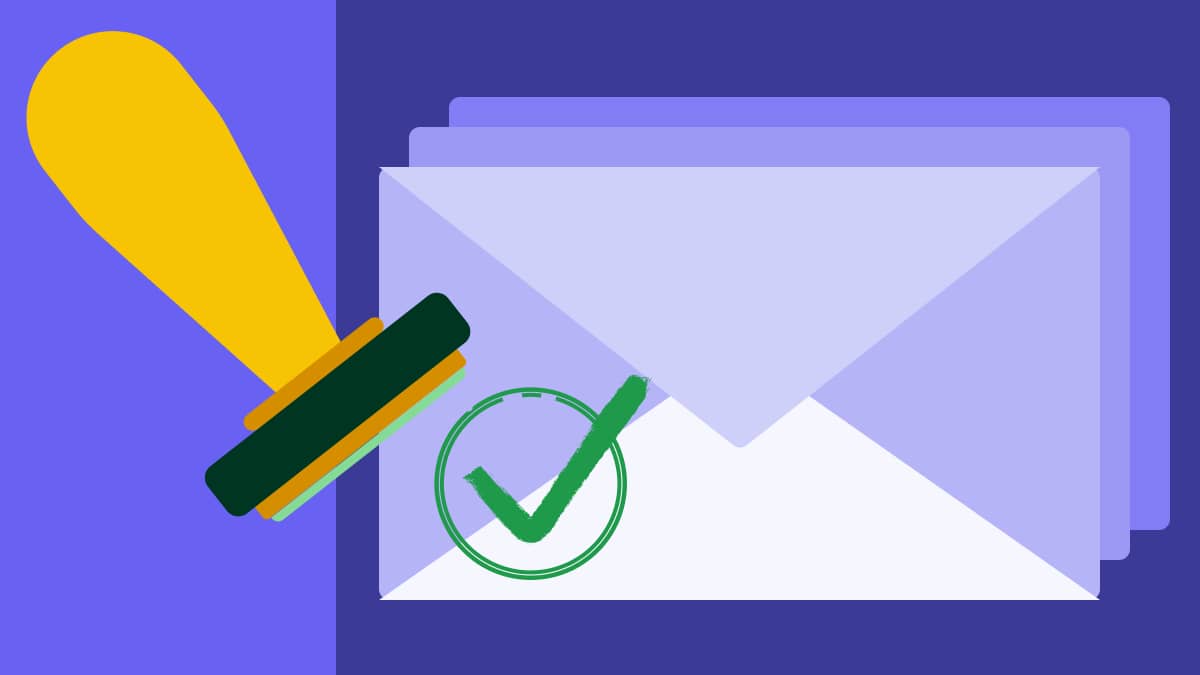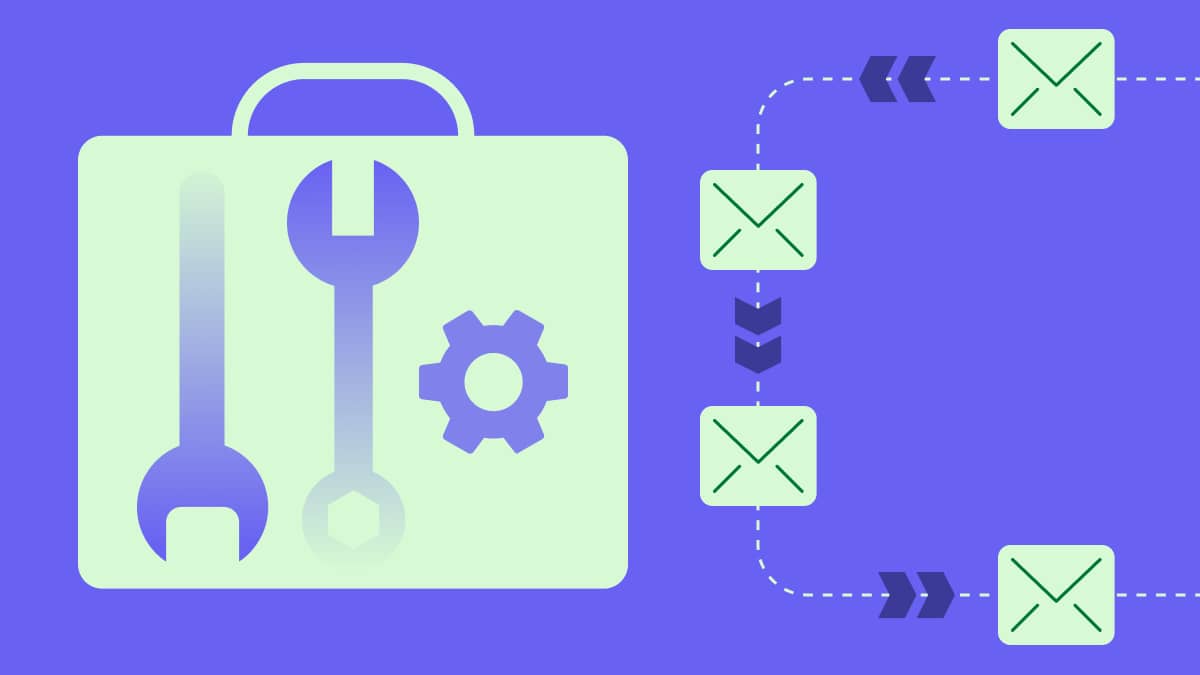Many businesses waste time and money creating and sending out email marketing campaigns that their target recipients never see. This isn’t due to bad timing, poor automation or a small subscriber list. The emails never reach people because they don’t make it through spam filters.
Before you send out a campaign, you must make sure you’ve created a message that will sail through spam filters for emails in order to land in your recipients’ inbox. If it lands in the spam folder, you can be almost certain it will never be read or taken seriously.
In this article, we explain what spam filters are, how email service providers (ESPs) use them and share the different types of spam filters that are frequently used. We then cover the most common reasons why emails are marked as spam so you can avoid them.
What are spam filters for email?
Internet service providers (ISPs), email service providers (ESPs) and the email servers of companies use spam filters to protect people from receiving undesired, unsolicited and potentially virus-infected email messages.
The most dangerous of these unwanted emails come from scammers (these are called phishing emails, phishing attacks or cyberattacks). The emails usually claim to offer you something when really they seek personal information from you (such as your credit card information), or they contain a link that, if clicked, will download malware onto your computer.
Then, there are emails that you never requested, sent by hopeful but unwary marketers. These emails can be innocent enough and are relatively harmless, but still, spam filters work to ensure you don’t receive them.
ESPs such as Google Gmail, Microsoft Outlook and Hotmail, Apple iOS and Yahoo use spam-detecting software which sets certain criteria that all emails must meet in order for successful email delivery. Should an email from a particular sender be marked as spam, the filters will then automatically place all emails from that sender in spam folders.
Types of spam filters
Let’s go through the different types of spam filters used on all incoming emails.
Blocklist filters
If an email sender has been identified as a scammer in the past, they’ll be put on a blocklist by ISPs and ESPs. Blocklist email spam filters will then configure and block all emails sent by that sender.
As spammers change their email addresses frequently, blocklist filters must be updated regularly to keep up with and add to the blocked sender list. If you wrongfully end up on an email blocklist it could affect your email deliverability, so make sure to follow best practices to avoid ending up there (or to restore your email health if you already have).
Header filters
Email headers are filtered to check whether emails come from a legitimate source. For example, they look at the domain name, email accounts and internet protocol (IP) addresses of the sender to determine whether or not they’ve been marked as spammers in the past. Without IP address authentication, your emails won’t make it to any inboxes.
Content filters
Content filters analyze the text, images and formatting within an inbound email to determine whether or not emails are considered spam messages. There are several reasons why emails don’t make it through content spam filters:
They contain spelling errors or inappropriate language/images
They offer some kind of financial gain (e.g. the email subject line exclaims “Limited time!”, “Discount!” or “Special offer!”)
They promote explicit material
They contain dangerous links
Language filters
If your audience receives an email sent in a foreign language, spam filters will detect it and send the message to their spam folder. After all, most recipients only want to receive emails in a language they can understand.
Naturally, this can also mean that legitimate emails from businesses and contacts overseas can sometimes wind up getting marked as spam, so be sure to notify your customers or clients to check their spam folder if you need to send this kind of message.
Rule-based filters
Rule-based filters can be set up by anyone to prevent certain types of emails from reaching email inboxes. This could mean your audience has blocked certain senders or emails containing certain words or phrases.
Bayesian filters
Bayesian filters block emails by looking at the emails your audience has marked as spam in the past. They then use that information to filter future emails. If readers continuously send emails from a certain sender (or emails that contain certain themes) to spam, these filters will use algorithms and machine learning to block similar future emails.
Why your email is marked as spam
You might still be wondering why an email you sent out was marked as junk mail, so let’s look at things you should avoid in order to increase your email deliverability, open rate and return on investment (ROI).
Large images in your email content
Don’t include images over 1MB and 600 pixels wide. Images shouldn’t take up more than 50% of the whole email. It’s better if the majority is text.
Incorrect links
If the email contains non-existent or incorrect links, it probably won’t make it past spam filtering solutions. If you track HTML clicks within HTML campaigns, we don’t recommend inserting links that begin with “http://” because internet service providers (ISPs) can identify them as scams and forward them to the spam folder.
In HTML messages, email software often automatically recognizes text as links starting with “http://”. If this text already contains a link, it may seem very suspicious and these messages are often caught by spam filters.
Spam words in the email content and subject line
Email servers’ anti-spam software is designed to catch emails containing specific words or word combinations in the email content or subject line. It’s also possible to manually enrich this spam list by typing spam words and criteria, then watching what will happen if spam filters recognize potential threats in the email. Most ESPs use third-party services like Cloudmark to keep their email spam word list database up to date.
Large attachments
If you want your email campaign delivered as fast as possible, do not attach large files. Our recommended size for an attachment is up to 1MB, with the maximum at 10MB. Make sure you’ve reduced the attachment size as much as you can.
Forms and scripts in the email content
Don’t insert scripts and forms in email content as this could increase your spam score. Almost all email programs block script codes, which means that even if the recipient receives your message, any forms and scripts won’t work anyway.
Long subject lines
Don’t write subject lines longer than 50 characters. There’s a high chance it won’t pass through email filtering and most email clients don’t have the space to display subject lines consisting of more than 50 characters.
Also, leave the most important information for email content and beware of spam words in the email subject line.
Previous unopened emails
Some ISPs and email providers practice the following: If your sent emails aren’t opened for a long time, then your future emails for the same recipient will land in the spam folder. To land them in the inbox folder, the recipient must open at least some of your messages. If they don’t, but you think they could be an engaged subscriber if your emails made it to their inbox, you may want to change the sender IP.
The DMARC policy
If you’re sending your emails from a public domain (e.g. Gmail or Yahoo) or a private domain without authentication, admins could block your emails. This is because of the DMARC policy.
Start sending your new email campaigns from your company’s domain email address instead and don’t forget to enable email authentication. This way, you’ll avoid any unsubscribes and your recipients can add you to their list of approved senders.
Final thoughts
Spam filters can be tricky for marketers to navigate but are essential for email security. Ultimately, they protect us all from spam emails and make the email marketing landscape a safer place.
To improve your email delivery, always make sure you optimize your email campaigns so that they fly straight through any firewalls and into every recipient’s inbox.




